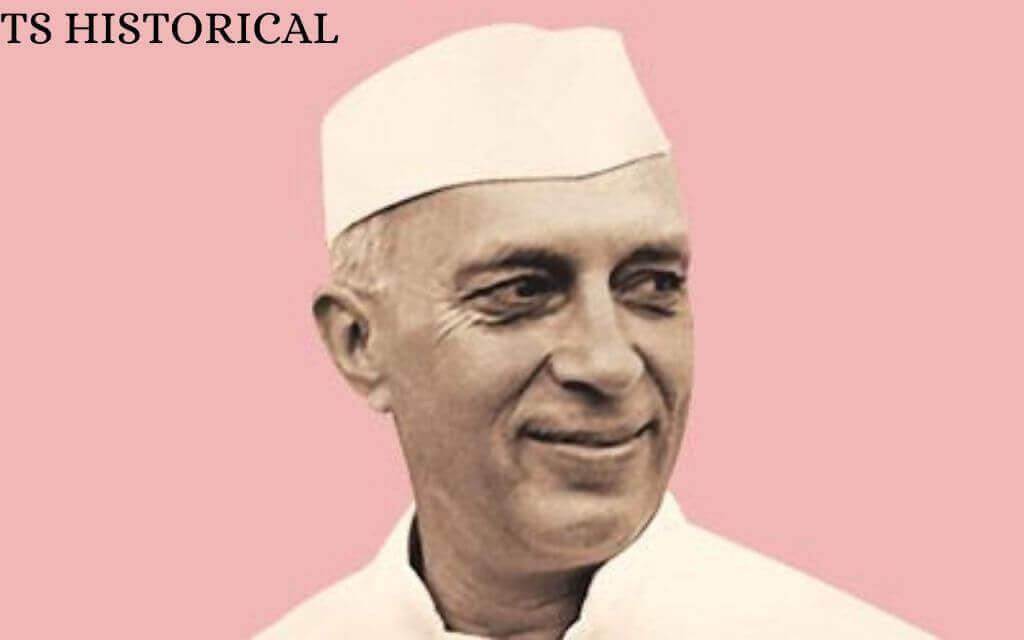Jawaharlal Nehru History

| Born: | 14 November 1889, Prayagraj |
| Died: | 27 May 1964, New Delhi |
| Spouse: | Kamala Nehru (m. 1916-1936) |
| Parents: | Motilal Nehru, Swarup Rani Nehru |
| Children: | Indira Gandhi |
| Education: | Trinity College (1907-1910), Harrow School, City Law School |
Jawaharlal Nehru: On November 14, 1889, Pandit Jawaharlal Nehru was born in Allahabad. His early education was provided by private teachers at his home. At the age of fifteen, he moved to England and joined Harrow School for two years before joining the University of Cambridge, where he earned a bachelor’s degree in natural science. He returned to India in 1912 and entered politics right away. Even as a student, he was interested in the struggle for independence of countries ruled by foreign powers. He was very interested in the Irish Sinn Féin movement. He was forced to join India’s freedom movement.
He was a member of the Bankipur Conference in 1912, and in 1919 he became the General of the Allahabad Home Rule League. He met Mahatma Gandhi for the first time in 1916 and was immensely influenced by him. In the year 1920, he organized the first Kisan March in Uttar Pradesh’s Pratapgarh area. In connection with the non-cooperation movement of 1920-22, he was also imprisoned twice.
In September 1923, Pandit Nehru was officially Appointed Secretary of the All India Congress Committee. In 1926, he traveled to Italy, Switzerland, England, Belgium, Germany, and Russia. As an official delegate of the Indian National Congress, he attended the Conference of Depressed Countries in Brussels, Belgium. In Moscow in 1927, he took part in the tenth-anniversary festivities of the October Socialist Revolution. Nehru had played a key role in
the Bombay Congress in 1926 when he committed the Congress to the aim of independence. He was lathi-charged in Lucknow in 1928 while leading a protest against the Simon Commission. He was one of the first to sign the Nehru Report on Indian Constitutional Reforms on August 29, 1928, at the All-Party Conference. Mr. Motilal Nehru, his father, was the inspiration for the report. In the same year, he created and became the general secretary of the ‘Indian Independence League.’ The league’s main goal was to completely remove India from the British Empire.
Pandit Nehru was chosen president of the Indian National Conference’s Lahore session in 1929, with the main goal of achieving complete independence for the country. During the 1930s and 1935, he was arrested multiple times as a result of the Salt Satyagraha and other Congress campaigns. On February 14, 1935, he finished writing his ‘autobiography’ at Almora Jail. He flew to Switzerland to see his ill wife after his release and visited London in February and March 1936. He also went to Spain in July 1938, while the country was in the midst of a civil war. He also went on a tour of China shortly before the outbreak of World War II.
Pandit Jawaharlal Nehru performed an Individual Satyagraha in opposition to India’s forced participation in the war, for which he was detained on October 31, 1940. In December 1941, he and other leaders were released from prison. Pandit Nehru established the goal of enacting the historic resolution ‘Quit India’ at the All India Congress Committee meeting in Mumbai on August 7, 1942. He was arrested, along with other leaders, on August 8, 1942, and carried to Ahmednagar Fort.
This was the last time he had to go to jail, and he had to stay for the longest period of time. In his entire life, he was jailed nine times. Following his release in January 1945, he became a lawyer for INA officers and others accused of treason. Pandit Nehru traveled to Southeast Asia in March 1946. He was elected President of the Congress for the fourth time on July 6, 1946, and was re-elected three times between 1951 and 1954.
Discover more from TS HISTORICAL
Subscribe to get the latest posts sent to your email.

